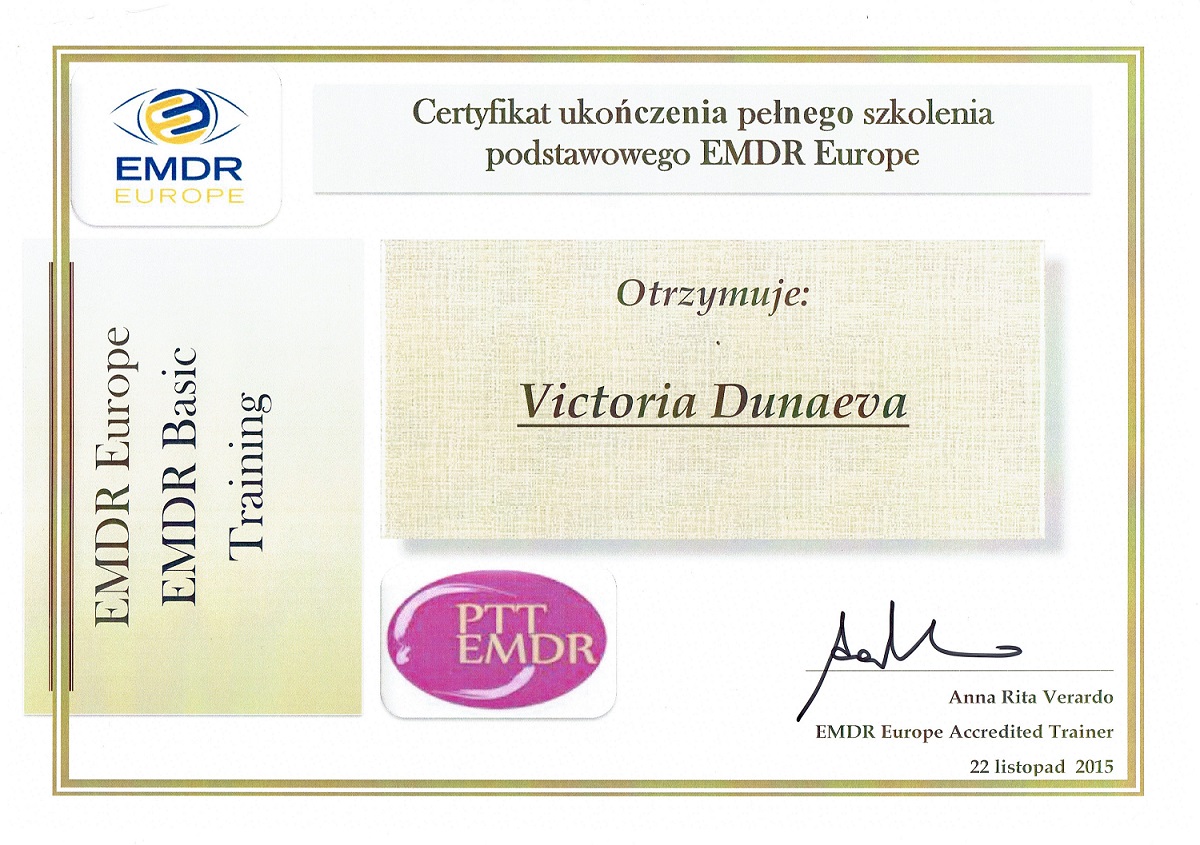EMDR
We use contemporary psychological treatment method EMDR - Eye Movement Desensitization and Reprocessing. EMDR was originally designed to alleviate the distress associated with traumatic memories (dr Francine Shapiro).
During EMDR therapy the client attends to emotionally disturbing material in brief sequential doses while simultaneously focusing on an external stimulus. Therapist directed lateral eye movements are the most commonly used external stimulus but a variety of other stimuli including hand-tapping and audio stimulation are often used (Shapiro, 1991). Accoridng to Francis Shapiro (1995, 2001) EMDR facilitates the accessing of the traumatic memory network, so that information processing is enhanced, with new associations forged between the traumatic memory and more adaptive memories or information.
It is powerful treatment which is used in case of PTSD (Posttraumatic stress disorder), depression, fears, anxieties in order to reduce the long-lasting effects of distressing memories by developing more adaptive coping mechanisms.
Shapiro, F. (1989). Efficacy of the eye movement desensitization procedure in the treatment of traumatic memories. Journal of Traumatic Stress, 2, 199-223.
Shapiro, F. & Forrest, M. (1997). EMDR The Breakthrough Therapy for Overcoming Anxiety, Stress and Trauma. New York: Basic Books
Shapiro, F. (1989). Eye movement desensitization: A new treatment for post-traumatic stress disorder. Journal of Behavior Therapy and Experimental Psychiatry, 20, 211-217.
Shapiro, F. (1995). Eye Movement Desensitization and Reprocessing: Basic Principles, Protocols and Procedures (1st edition). New York: Guilford Press

Interview with the co-founder of "Activus Aspectus. Innovative Laboratory' Victoria Dunaeva, PhD: "EMDR as an effective tool to reduce negative consequences of post-traumatic disorders": https://www.youtube.com/watch?v=lMuAnVYFLRs
Alternative Festival "Health-Development-Knowledge" in Cracow, Poland (27.05.2018)





